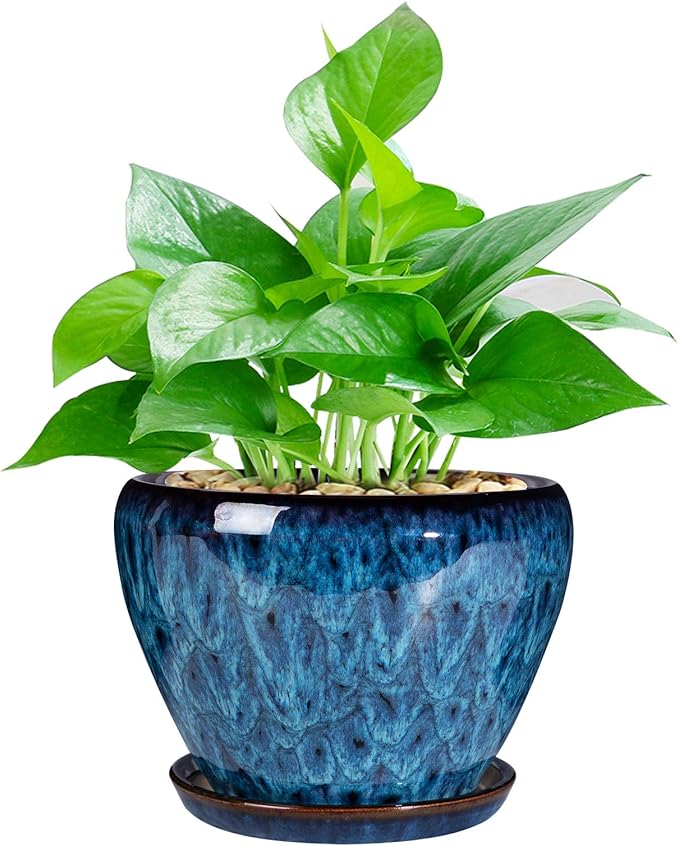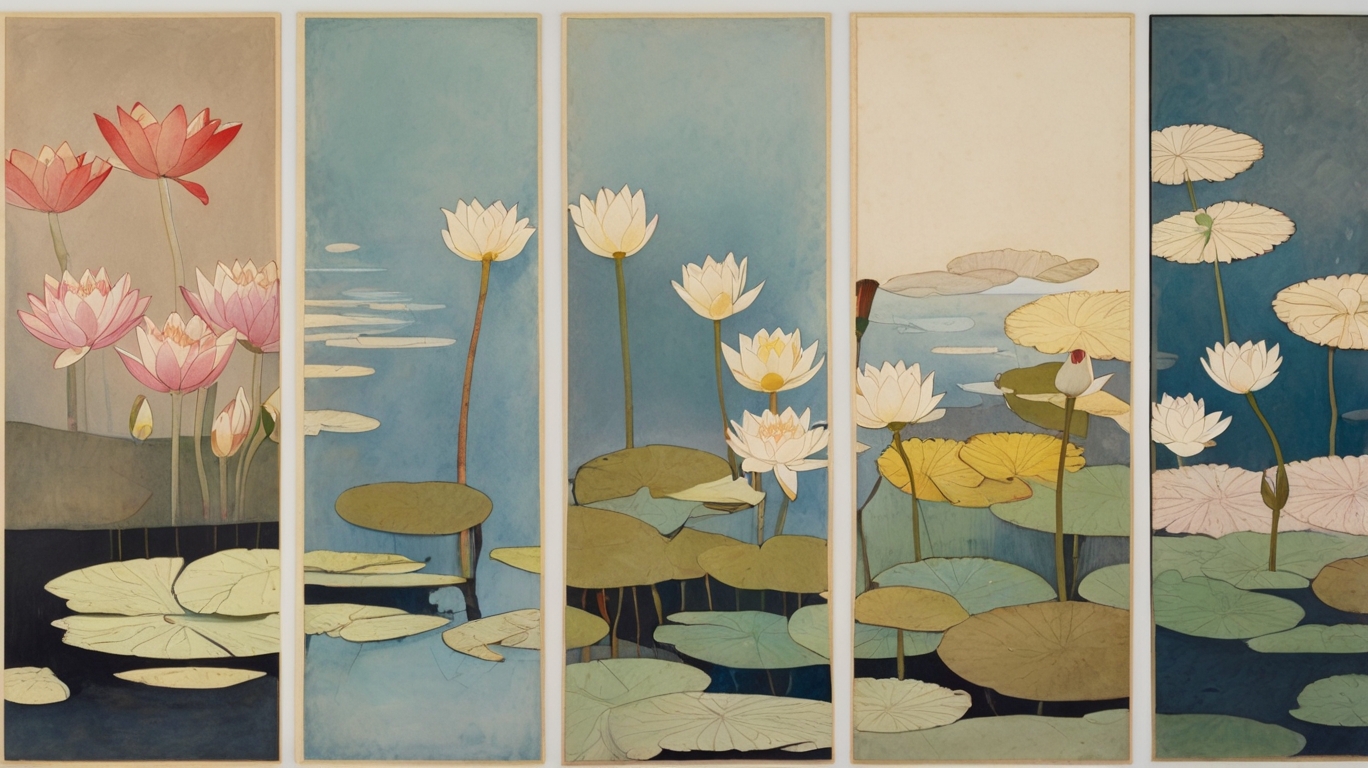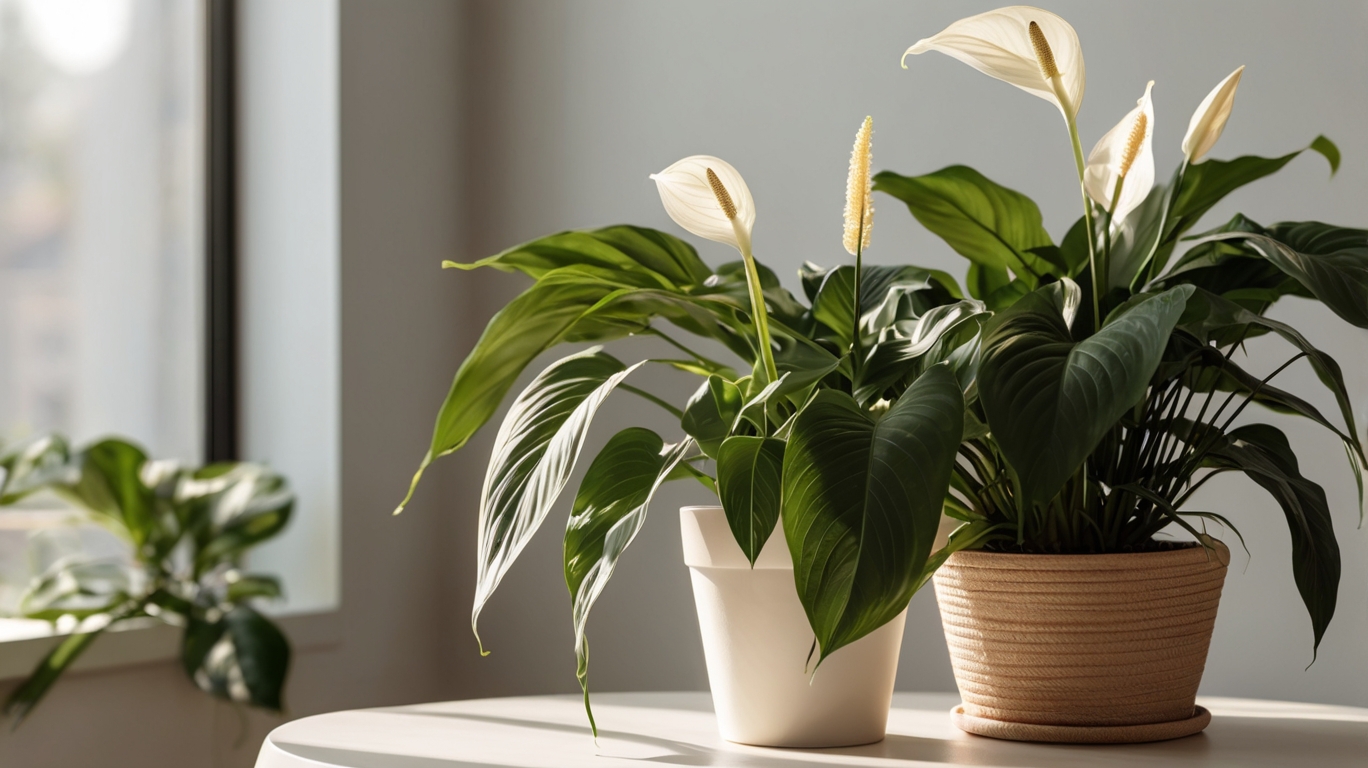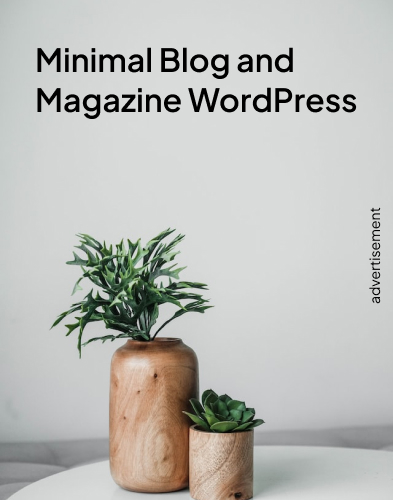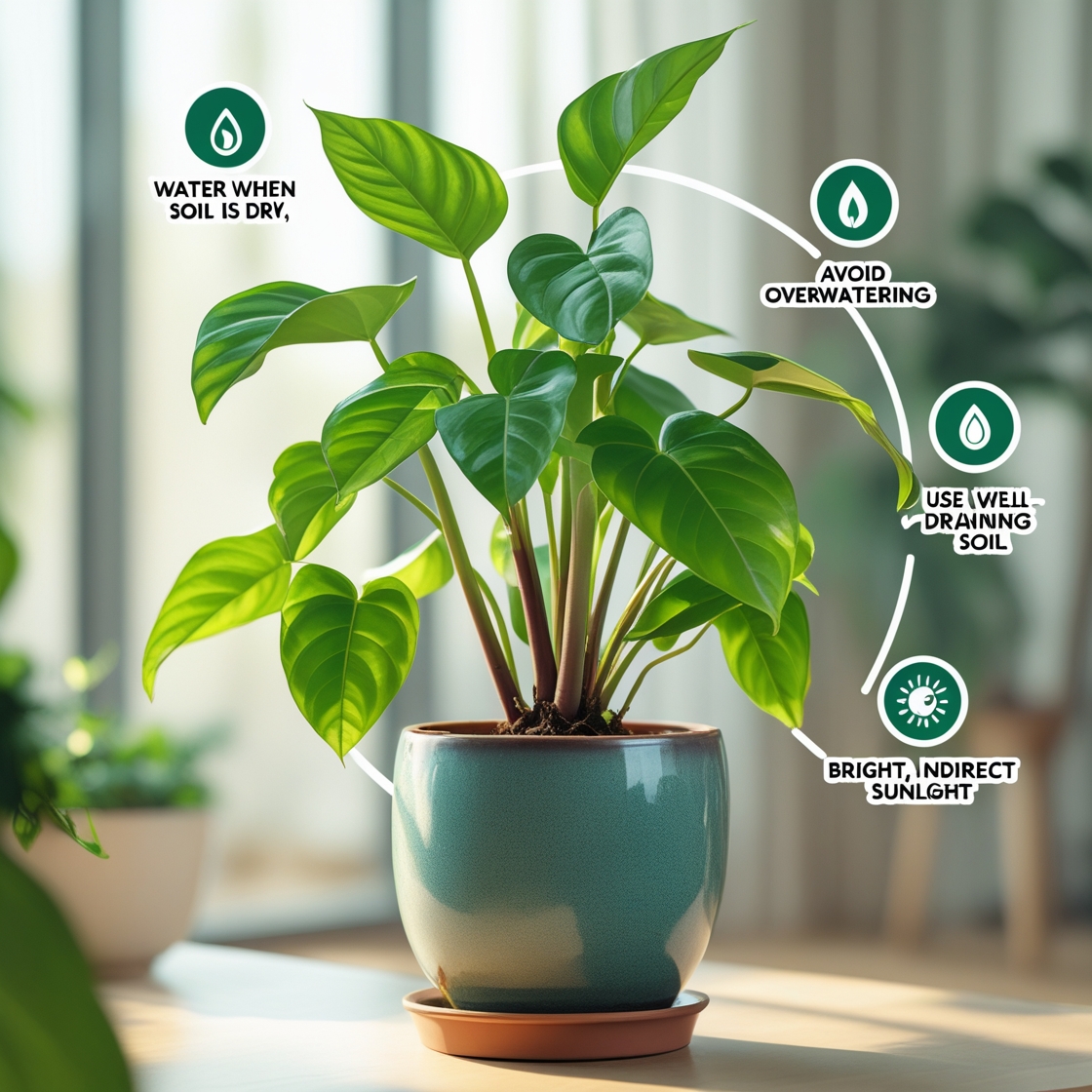What Plant Is a Money Tree? Meaning, Benefits & Care Tips #1

Introduction
The question “What plant is a money tree?” is often asked by plant lovers, interior decorators, and those with an interest in Feng Shui. The money tree, most commonly known as Pachira aquatica, has become a beloved houseplant due to its attractive braided trunk and shiny green leaves. This plant’s unique appearance, combined with its symbolism of prosperity and good fortune, makes it a popular choice for homes, offices, and businesses. In Feng Shui, it’s especially revered for its ability to attract positive energy and enhance financial success.
Its symbolic connection to wealth and abundance has made the money tree more than just an aesthetic addition—many people believe it brings good luck and acts as a charm for growth and harmony in one’s environment. Whether you’re looking to decorate your space or invite a little extra fortune into your life, the money tree is a perfect choice.

What Plant Is a Money Tree?
The money tree typically refers to Pachira aquatica, a tropical plant native to the swampy regions of Central and South America. Known for its shiny green leaves and unique, often braided trunk, this plant is not only loved for its aesthetic appeal but also for its symbolic significance. It’s often associated with wealth, good fortune, and the attraction of positive energy, making it a popular choice in homes and offices.
Scientific Classification of the Money Tree
- Scientific Name: Pachira aquatica
- Family: Malvaceae
- Genus: Pachira
- Species: Pachira aquatica
Origins and Cultural Significance
The Pachira aquatica, commonly known as the money tree, originates from the swampy, tropical regions of Central and South America. While its native habitat is far from the bustling cities of Asia, it became a global symbol of prosperity and good fortune thanks to East Asian culture, particularly in Taiwan and China. In the 1980s, a Taiwanese truck driver began braiding the plant’s stems and sold it as a good-luck charm for people seeking wealth and success. This innovation caught on quickly, and the plant became so widely popular that it was soon marketed around the world as the beloved “money tree.”
Its popularity grew not only for its symbolic association with abundance but also for its striking appearance, with its braided trunk and lush green leaves, making it an ideal decorative plant in homes and offices alike. Today, the money tree is not just a symbol of wealth but also a widely loved houseplant, appreciated for its beauty and its reputation for bringing positive energy into any space.
Common Names and Misconceptions
While the term “money tree” most commonly refers to Pachira aquatica, several other plants also share this nickname due to their symbolic association with luck and prosperity:
-
Jade Plant (Crassula ovata) – This hardy succulent is believed to attract wealth and success, often placed in homes or businesses to promote good fortune.
-
Chinese Money Plant (Pilea peperomioides) – Known for its distinctive, round, coin-like leaves, this plant is a popular symbol of fortune and is often considered a good luck charm.
-
Lucky Bamboo (Dracaena sanderiana) – Frequently used in Feng Shui practices, lucky bamboo is thought to bring good energy, luck, and prosperity to those who keep it.
Although these plants are frequently associated with prosperity and success, they are not true “money trees” like Pachira aquatica. Each plant, such as the Jade Plant, Chinese Money Plant, and Lucky Bamboo, carries its own unique symbolism and cultural significance. The Jade Plant is often linked to financial abundance, the Chinese Money Plant represents fortune and growth, while Lucky Bamboo is known for inviting good energy and luck. Despite their differences, they all share the common theme of attracting positive energy, wealth, and good fortune, making them popular choices for those seeking to invite prosperity into their lives.

The Symbolism Behind the Money Tree
-
Symbolism of the Money Tree (Pachira aquatica):
-
Prosperity & Abundance: Commonly gifted during the New Year or at business openings to bring good fortune.
-
Five Leaves per Stem: Symbolize the five elements in Feng Shui—wood, water, earth, fire, and metal—creating balance and harmony.
-
Braided Trunk: Thought to trap wealth and luck within its folds, keeping prosperity “locked in.”
-
Benefits of Keeping a Money Tree Plant
-
-
🌿 Air Purification: Helps filter out indoor pollutants, contributing to a healthier living space.
-
🌱 Low Maintenance: Easy to care for—perfect for beginners or busy plant lovers.
-
✨ Aesthetic Appeal: Its braided trunk and lush green leaves add a modern, elegant touch to any room.
-
😊 Mood Booster: Greenery is known to reduce stress and enhance mental well-being.
-
Feng Shui and the Money Tree
🌿 Feng Shui Placement Tips for the Money Tree
✅ Best Places to Put It:
-
Wealth Corner (Southeast): The ideal location to boost financial luck and abundance.
-
Entryway or Office: Welcomes business opportunities, harmony, and positive energy into your space.
🚫 Places to Avoid:
-
Bathrooms: Symbolically “flush away” good fortune and energy.
-
Bedrooms: May bring in too much yang energy, disrupting restful sleep.
How to Grow a Money Tree Indoors
Best Fertilizers for Money Trees
-
-
Type: Use a balanced liquid fertilizer like 10-10-10 or 20-20-20.
-
Frequency: Fertilize once a month during the growing season (spring to early autumn).
-
Organic Options: Consider compost tea or fish emulsion as natural alternatives.
-
Common Problems and How to Fix Them
-
-
Yellow Leaves: Likely due to overwatering. Ensure proper drainage and let the soil dry between waterings.
-
Brown Tips: Caused by low humidity or salt buildup. Increase humidity or flush the soil to remove excess salts.
-
Drooping: Indicates underwatering or temperature stress. Check water levels and avoid placing it in drafty spots.
-
Pests: Watch out for spider mites or mealybugs. Treat with neem oil for a natural, safe solution.
-
Pruning and Repotting Tips
-
-
Pruning: Trim your money tree in spring to encourage bushier growth and maintain its shape.
-
Repotting: Every 2–3 years or when the plant becomes root-bound.
-
Tip: Use fresh soil and a slightly larger pot for best results.
-
-
Propagation of Money Tree Plants
-
-
-
Cuttings: Take stem cuttings with at least 2 nodes.
-
Propagation Methods: Both water and soil propagation are effective.
-
Best Time: Propagate during spring or early summer for optimal success.
-
-
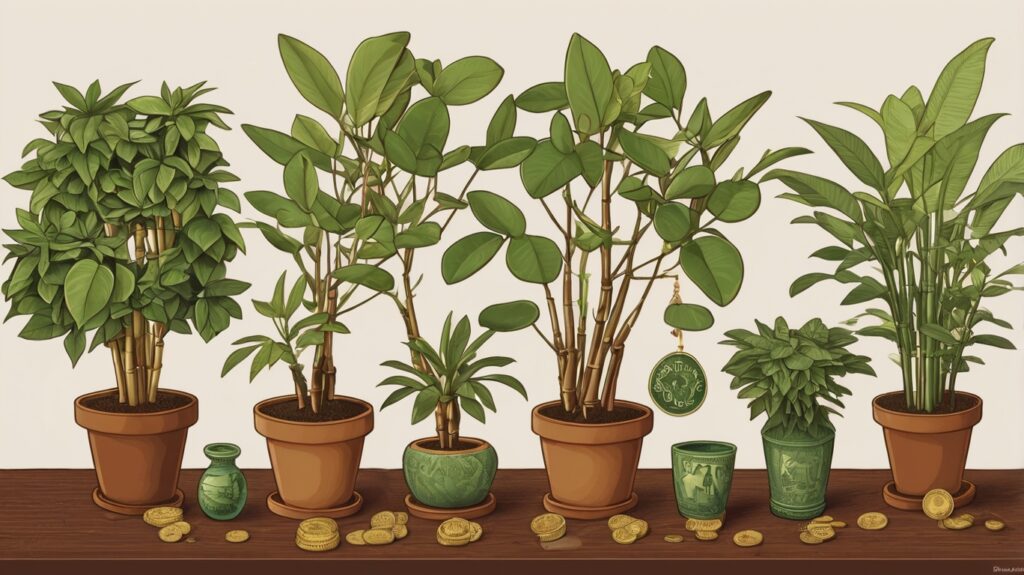
Are Money Trees Safe for Pets?
Yes! According to the ASPCA, Pachira aquatica is non-toxic to cats and dogs.
Comparing the Money Tree to Other “Lucky” Plants
| Plant Name | Botanical Name | Symbolism | Toxic to Pets? |
|---|---|---|---|
| Money Tree | Pachira aquatica | Wealth & Prosperity | No |
| Jade Plant | Crassula ovata | Good Luck & Friendship | Yes |
| Lucky Bamboo | Dracaena sanderiana | Good Fortune & Flexibility | Yes |
| Chinese Money Plant | Pilea peperomioides | Fortune & Friendship | No |
FAQs About the Money Tree
1. Is the money tree really lucky? Yes, according to Feng Shui, it’s believed to attract wealth and good vibes.
2. Can I keep a money tree in my bedroom? Not recommended in Feng Shui; better in living room or office.
3. How tall can a money tree grow? Indoors, up to 6–8 feet; outdoors, much taller.
4. Do I need to braid the trunk myself? Not necessary. Braiding is aesthetic and done when young.
5. How do I know when to repot? If roots are visible through drainage holes or growth slows down.
Conclusion
The money tree (Pachira aquatica) is a highly sought-after plant, often associated with wealth, prosperity, and good luck. Its unique appearance, featuring a braided trunk and lush green leaves, makes it an eye-catching addition to any room. Native to the swampy areas of Central and South America, the money tree has gained worldwide popularity, especially in Feng Shui practices, where it’s believed to attract positive energy and financial success. The plant is easy to care for, thriving in indirect light and moderate humidity while being highly adaptable to different environments, making it perfect for indoor spaces.
Besides its symbolism, the money tree’s low-maintenance nature makes it ideal for beginners or those with busy schedules. It doesn’t require frequent watering, needing just a watering every 1-2 weeks, and it’s quite tolerant of different light levels. The money tree is also known for its air-purifying qualities, which can contribute to a cleaner, healthier living environment. With its symbolism and numerous benefits, it’s no wonder this plant is a favorite for both decoration and its supposed ability to bring abundance and harmony into one’s life.
With just a little attention to its care needs, your money tree will thrive, adding not only beauty but also a positive flow of energy to your home, office, or business. This plant isn’t just about physical growth, but also about fostering an environment of well-being, peace, and prosperity. Its presence can encourage a sense of success, calm, and stability in your surroundings. So, why not invite a little extra luck and good fortune into your life? Let the money tree work its magic, creating a space that promotes not only aesthetic growth but also personal flourishing and energetic balance.
Click the link below to buy “FLOWER Retro Wooden Stand Plant Terrarium with 3 Bulb Glass Vases for Hydroponic Home & Office Décor”
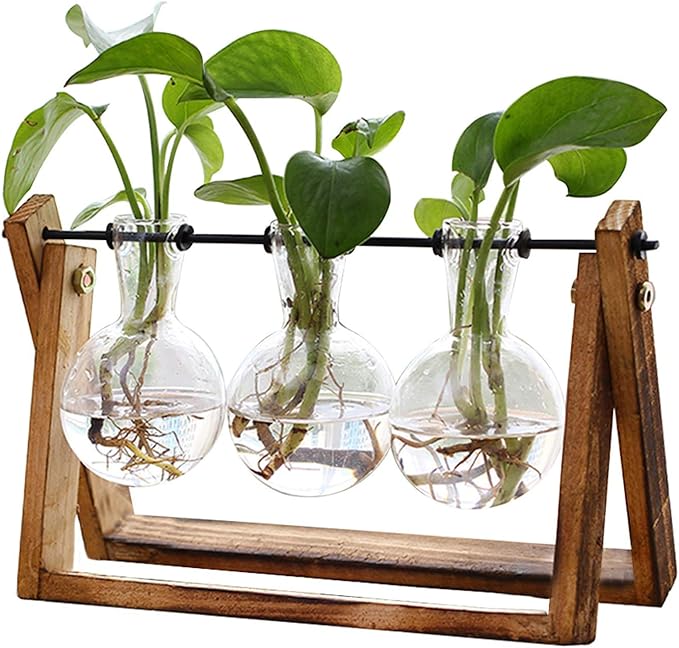
“Click the link below to buy “6-inch modern ceramic planter with glaze, drainage hole, and saucer for indoor & outdoor plants.”
